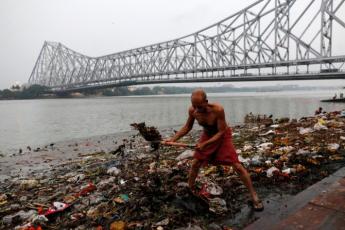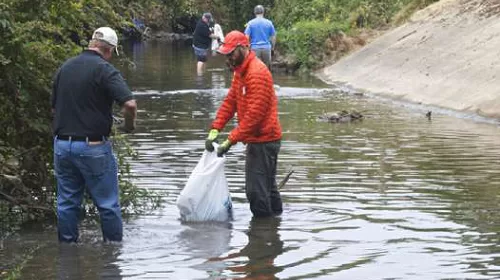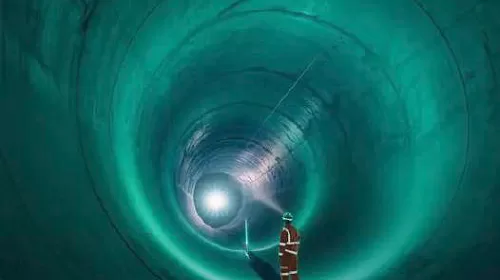The Supreme Court has expressed concern over the treatment of sewage generated in villages, towns and cities and said untreated waste is discharged into rivers and rivulets polluting the very sources of water upon which the survival of the population and bio diversity depends.
The top court asked the National Green Tribunal to ensure that an accountable mechanism is set up in Uttar Pradesh to take stock of the performance of the sewage treatment plants, providing for adequate funds for upgrade and maintenance as required and for attending to all other administrative issues and problems.
The Uttar Pradesh government said that total sewage generated in the state is 5500 MLD, which is one of the highest in the country and 100 per cent treatment of sewage in the state would be done by June 2025.
A bench of Chief Justice DY Chandrachud and justices PS Narasimha and JB Pardiwala passed the order after hearing an application of Uttar Pradesh government seeking more time to install and operationalise 100 per cent STP coverage in the state.
The top court had on February 22, 2017 directed the states to adhere to the mandatory timelines for the setting of common effluent treatment plants and STPs within a period of three years for treatment of untreated wastes generated in different villages, cities an towns.
The Uttar Pradesh government contended in its application that timelines which were provided by the court in 2017 “are impractical and artificial and impossible to implement in the time frame, given present funding and institutional capacities and other competitive priorities of the state”.
The state government said that the total sewage generated in Uttar Pradesh is 5500 Million Litres Per Day and it has operational 122 STPs with a treatment capacity of 3860 MLD, 52 STPs with a treatment capacity of 1004 MLD are under construction and are to be commissioned by December 2024.
“15 STPs with a treatment capacity of 854 MLD are under ‘tendering’ and are proposed to be commissioned by June 2025,” the state government said, adding that 317 STPs with a treatment capacity of 1593 MLD would be installed by December 2025.
The bench noted that in sum and substance, it has been submitted by the state government that 100 per cent treatment of sewage would be envisaged by June 2025.
It said that the mere setting up of STPs is not enough and the maintenance of the STPs and their performance and capacity to deal with sewage which is generated is another matter which has to be duly scrutinised and monitored.
“The treatment of sewage which is generated in the villages, towns and cities is a matter of utmost concern. Untreated sewage waste is discharged into rivers and naalas polluting the very sources of water upon which the survival of the population and bio diversity depends,” it said in its recent order.
The Uttar Pradesh government submitted that the state has one of the highest population densities in the country of 828 per sq km whereas the national average is 464 per sq km. “Hence, the laying of sewerage networks and acquisition of land poses a challenging task,” it said.
The bench ordered, “We accordingly permit the applicant to move the National Green Tribunal with an application in that regard. The National Green Tribunal shall duly monitor compliance with the directions including the time-lines which have been spelt out in the order of this court.”
It added that it would be open for the Uttar Pradesh government to place on the record of the tribunal all material to indicate the bona fide steps which were taken to comply with the order of this court and, if there were any genuine hindrances in doing so, the nature of the hindrances.
“The tribunal would be at liberty in the exercise of its discretion to consider any request for a further extension of time,” it said. The bench said that the NGT is authorised in terms of the present order to suitably extend time should it be satisfied that all necessary steps have been pursued with a sufficient degree of alacrity.





